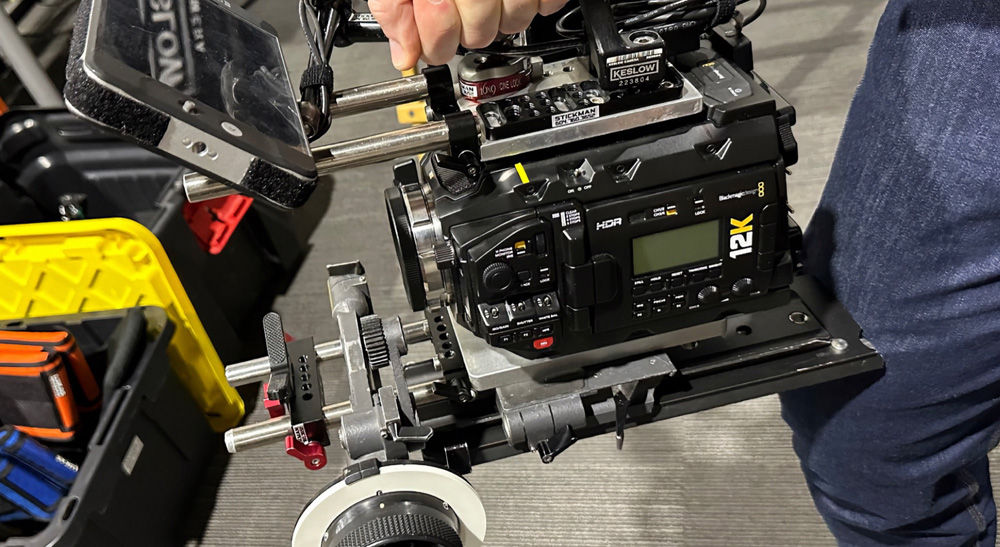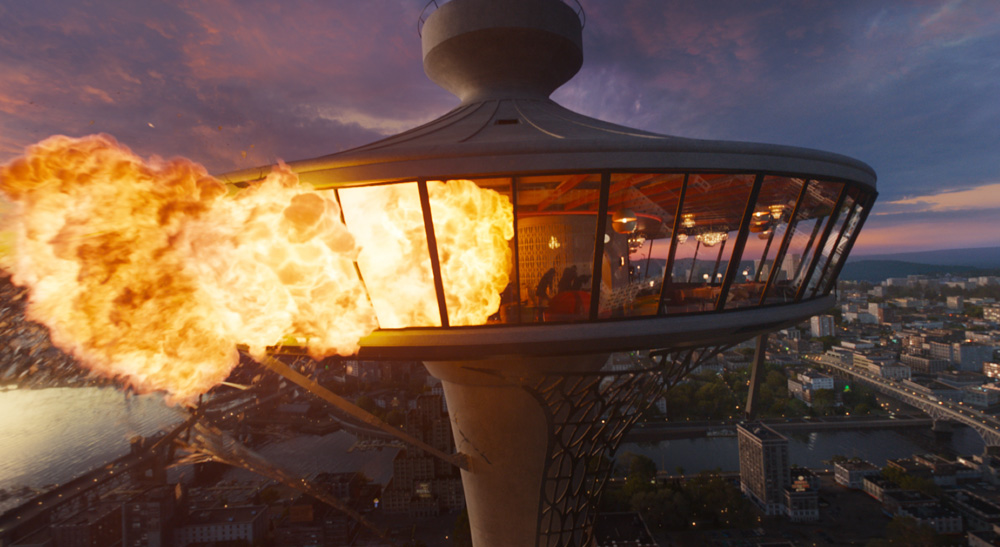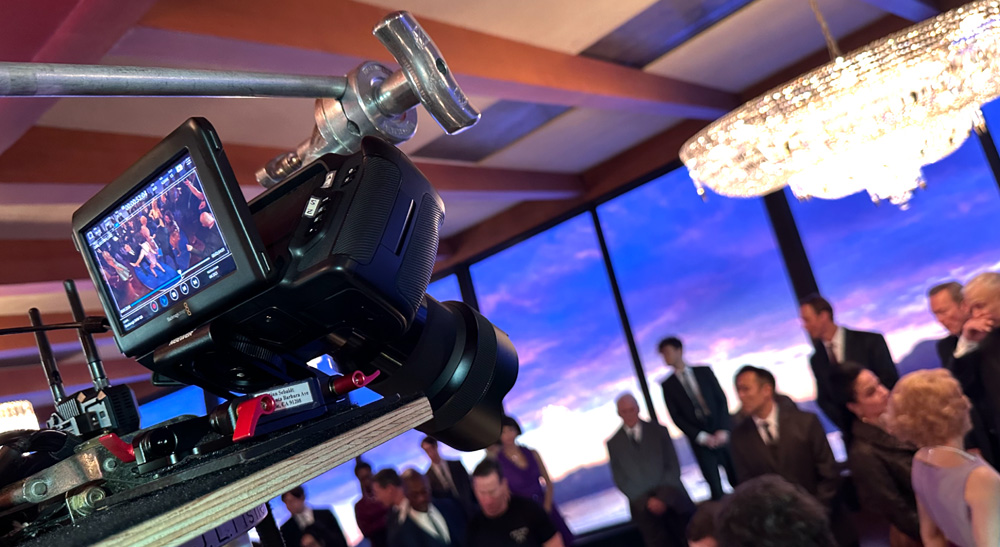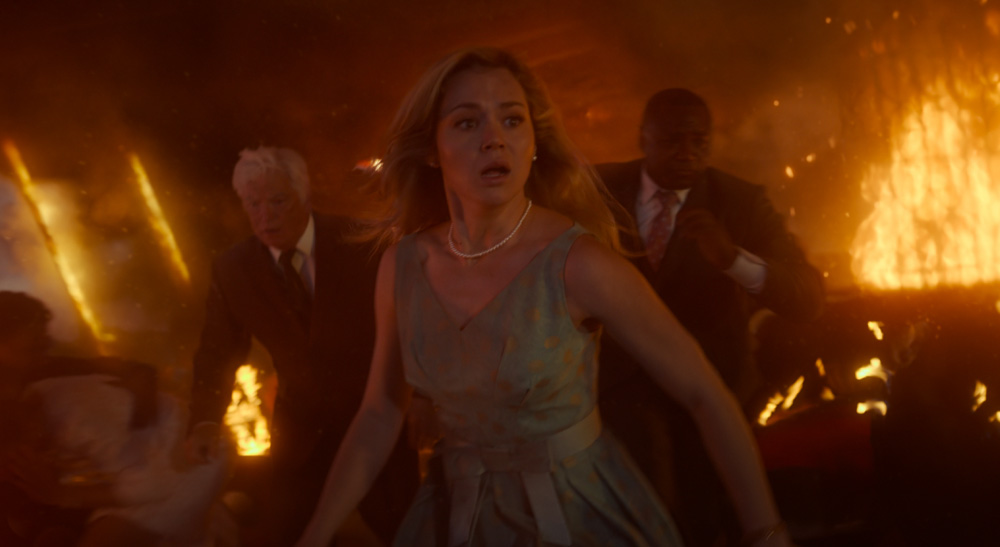Cinematographer Christian Sebaldt, ASC uses Blackmagic Cameras to expand coverage for IMAX film.
Fremont, CA, USA – Thursday, August 14, 2025 – Blackmagic Design today announced that the most recent installment of the popular Final Destination franchise, “Final Destination: Bloodlines” was shot using Blackmagic Design cameras, and color graded using DaVinci Resolve Studio editing, grading, visual effects (VFX) and audio post production software.
The newest chapter in New Line Cinema’s successful franchise takes audiences back to the very beginning of Death’s twisted sense of justice. Plagued by a violent recurring nightmare, college student Stefanie heads home to track down the one person who might be able to break the cycle and save her family from the grisly demise that inevitably awaits them all. The latest installment was directed by Adam Stein and Zach Lipovsky, who met Cinematographer Christian Sebaldt, ASC in 2007 on the Steven Spielberg/Mark Burnett show “On The Lot.”
“Adam and Zach were contestants in the filmmaker competition,” said Sebaldt. “I loved shooting short films on the show with both of them. They are quite artistic in their storytelling and have truly funny ideas. When ‘Final Destination: Bloodlines’ came along, the three of us were the perfect fit.”
Sebaldt leaned heavily on a number of Blackmagic Design cameras, including the Blackmagic URSA Mini Pro 12K and Blackmagic Pocket Cinema Camera 6K Pro digital film cameras, which were instrumental in capturing a wide range of different angles throughout the film, as well as special effects sequences and a number of extensive blue screen stunt sequences. The film was planning an IMAX release, and all cameras were tested for their ability to adhere to the IMAX exacting quality requirements. “Bruce Markoe, IMAX head of post production and image capture, was advising production and the studio on which cameras could be used on the shoot,” said Sebaldt. “We shot large focus and contrast charts for every camera and sent the footage to the IMAX headquarters in Los Angeles. They converted it all to IMAX format and Bruce even flew up to Vancouver to meet with us and view the test on one of their gigantic screens. The Blackmagic cameras held up well and IMAX gave them their blessing.”

The franchise is known for its set pieces, complex and diabolical setups that cause inventive deaths of the characters, and ‘Bloodlines’ was no different. Even the opening sequence was complex. “The very large scope of the custom LED Volume that was built for us at Bridge Studios near Vancouver, B.C. for the Skyview Restaurant sequence was an essential part of the first twenty minutes of the film and my greatest concern during prep,” added Sebaldt. “The restaurant scene required our stunt performers to appear to fall 400’ to their deaths, so we shot most of that on blue screen. Many of the shots of the sequence were with the Blackmagic cameras, including a hand held shot operated by a stunt performer sliding down a 30 degree tilted set toward huge glass panes. The combination of a high quality cinema image within a handheld unit creates shots that are incredibly unique and valuable.”
Other sequences were equally complex and required as much coverage as possible. “We built a large exterior/interior cabin set in the woods,” added Sebaldt. “We spent several days shooting there, and then in the end blew the entire thing up. We created a massive 80 foot tall fireball that we captured with eight cameras at speeds between 48 fps and 96 fps.”
Other scenes, such as driving shots, simple in concept, ended up as stunt sequences, with an RV smashing through a large metal gate that special effects detonated on impact. “The URSA Mini Pro 12K was buried in the road for the RV to drive over right by the gate and the Pocket Cinema Camera 6K Pros were mounted on the RV.”
With the completion of principal photography, the film was soon turned over to Picture Shop Colorist Paul Westerbeck, who helped shape a visual style that balanced the franchise’s intense, visceral tone with a fresh aesthetic. “The goal Christian and I hoped to achieve was a pleasing yet vibrant look that amplified tension while grounding the supernatural elements,” said Westerbeck. “Present day scenes embraced a crisp, naturalistic palette with strong contrast to heighten the high stakes atmosphere. In contrast, the opening sequence, set in the past, used a surreal vintage look to distinguish it from the modern timeline while maintaining visual cohesion.”

For Westerbeck, the Skyview restaurant posed the biggest challenge for his grading work, which was completed in DaVinci Resolve Studio. “The massive LED volume windows creating dynamic, high luminance backgrounds,” he said. “Isolating actors from these vibrant, shifting backdrops required precise keying and matting to prevent color spill and maintain clean edges, particularly in close ups where focus was critical. Although the massive LED volume was excellent, it periodically introduced inconsistent color temperatures, necessitating careful adjustments to keep skin tones natural without clashing with the background.”
“Final Destination: Bloodlines” also included extensive visual effects which required careful work in the grade for integration. “The VFX team, headed by Supervisor Nordin Rahhali, did excellent work, particularly in the Skyview restaurant and death sequences,” added Westerbeck. “The LED volume walls were enhanced with VFX to enrich their dynamic backgrounds, requiring close coordination to ensure my grade complemented their efforts. I received VFX plates with alpha channels, which I carefully balanced to match live action footage, adjusting color and luminance for seamless integration. Grading the VFX shots, I focused on ensuring composited elements blended naturally with practical footage. Roughly 30% of my grading time involved VFX related adjustments to maintain visual coherence.”
Westerbeck relied heavily on core DaVinci Resolve Studio tools such as qualifier, power windows, color warper and face refinement. “These DaVinci Resolve tools, paired with Christian’s exceptional cinematography and the directors’ clear vision, made the grading process both challenging and rewarding, delivering a visually striking film that enhances its thrilling narrative,” he concluded.
“Final Destination: Bloodlines” is currently available on digital.

About Blackmagic Design
Blackmagic Design creates the world’s highest quality video editing products, digital film cameras, color correctors, video converters, video monitoring, routers, live production switchers, disk recorders, waveform monitors and real time film scanners for the feature film, post production and television broadcast industries. Blackmagic Design’s DeckLink capture cards launched a revolution in quality and affordability in post production, while the company’s Emmy™ award winning DaVinci color correction products have dominated the television and film industry since 1984. Blackmagic Design continues ground breaking innovations including 6G-SDI and 12G-SDI products and stereoscopic 3D and Ultra HD workflows. Founded by world leading post production editors and engineers, Blackmagic Design has offices in the USA, UK, Japan, Singapore and Australia. For more information, please go to www.blackmagicdesign.com.

